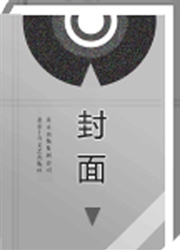

 中文摘要:
中文摘要:
作为一种混合成像技术, photoacoustic 成像(白族) 能提供纸巾的多尺度的词法信息,并且多光谱的白族(MSPAI ) 的使用能恢复兴趣的色基的空间分发,例如在纸巾以内的血红素。此处,我们开发了能很有效地为复杂生物纸巾的更全面的描述把多尺度的白族与 MSPAI 相结合的一个对比代理人。明确地,我们开发了新奇 PIID-DTBT 在可见光的区域(500-700 nm ) 显示出宽广、强壮的光吸收的基于的半导体的聚合物点(Pdots ) 。金 nanoparticles (GNP ) 和金 nanorods (GNR ) 的表演,作为优秀 photoacoustic 对比代理人被验证了,基于多尺度的白族系统与 Pdots 的相比。两前 vivo 并且在 vivo,实验比有在在一样的 700 nm 的 GNR 的 GNP 和显示出的类似的 photoacoustic 性能集中的证明 Pdots 在 532 nm 有更好的 photoacoustic 变换效率集中。Photostability 和毒性测试证明 Pdots 是 photostable 和 biocompatible。更重要地,一在里面 vivo MSPAI 实验显示 Pdots 比血有更好的 photoacoustic 性能,因此,信号能精确地从脉管富人的纸巾的背景被提取。我们的工作基于多尺度的白族和 MSPAI 相对血容器为损害的精确本地化作为高度有效的对比代理人表明 Pdots 的大潜力。
 英文摘要:
英文摘要:
As a hybrid imaging technique, photoacoustic imaging (PAI) can provide multiscale morphological information of tissues, and the use of multi-spectral PAI (MSPAI) can recover the spatial distribution of chromophores of interest, such as hemoglobin within tissues. Herein, we developed a contrast agent that can very effectively combine multiscale PAI with MSPAI for a more comprehensive characterization of complex biological tissues. Specifically, we developed novel PIID-DTBT based semi-conducting polymer dots (Pdots) that show broad and strong optical absorption in the visible-light region (500-700 nm). The performances of gold nanoparticles (GNPs) and gold nanorods (GNRs), which have been verified as excellent photoacoustic contrast agents, were compared with that of the Pdots based on the multiscale PAI system. Both ex vivo and in vivo experiments demonstrated that the Pdots have better photoacoustic conversion efficiency at 532 nm than GNPs and showed similar photoacoustic performance with GNRs at 700 nm at the same mass concentration. Photostability and toxicity tests demonstrated that the Pdots are photostable and biocompatible. More importantly, an in vivo MSPAI experiment indicated that the Pdots have better photoacoustic performance than the blood and therefore the signals can be accurately extracted from the background of vascular-rich tissues. Our work demonstrates the great potential of Pdots as highly effective contrast agents for the precise localization of lesions relative to the blood vessels based on multiscale PAI and MSPAI.
 同期刊论文项目
同期刊论文项目
 同项目期刊论文
同项目期刊论文
 期刊信息
期刊信息
